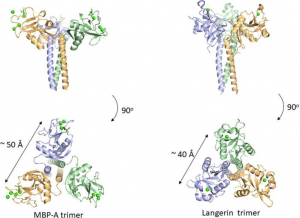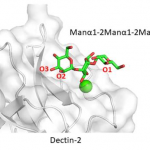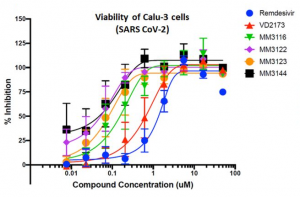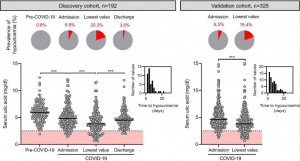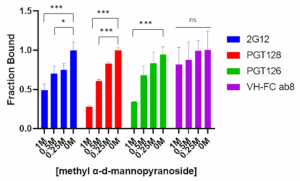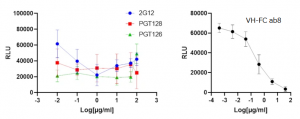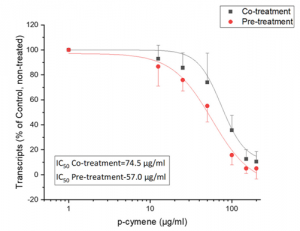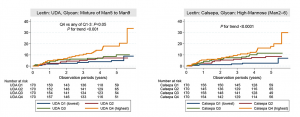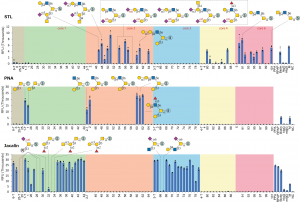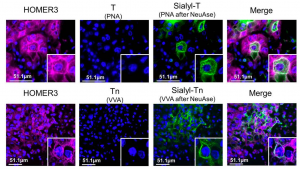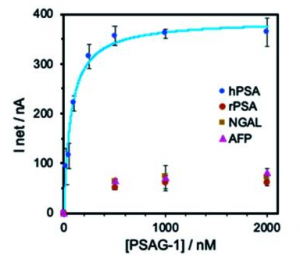Galectin-3 could be a good marker for Abdominal Aortic Aneurysm
A group from Taipei Medical University, Taiwan, etc. has reported that Galectin-3 could be a good marker for Abdominal Aortic Aneurysm (AAA).
https://www.ncbi.nlm.nih.gov/pmc/articles/PMC8200414/
Although ultrasound is the gold standard for the diagnosis and surveillance of AAAs with high sensitivity and specificity, the frequency of ultrasound surveillance varies with aneurysm diameter. Furthermore, ultrasound is not recommended for patients with subaneurysmal aortic dilatation. Therefore, circulating biomarkers of inflammation, which reflect the aneurysmal size, can assist in the detection and prognosis of AAA.
A cross-sectional study was performed to analyze plasma Gal-3 and IL-6 levels as circulating biomarkers in both control patients (n = 195) and patients with AAA (n = 151). Plasma Gal-3 levels were significantly higher in patients with AAA than in control patients (96.9 ± 4.5L vs. 76.5 ± 1.9 ng/mL), and the levels of IL-6 were also higher in AAA samples than in healthy control samples (92.8 ± 5.2 pg/mL vs. 72.5 ± 3.0 pg/mL). The diagnostic performance of Gal-3 and IL-6 were evaluated using ROC analysis. The results were that Gal-3 levels predicted AAA presence (AUC=0.91) significantly more accurately than did IL-6 levels (AUC=0.72).
Gal-3 is likely a chemotactic molecule for macrophages. Thus, its expression could be associated with various cardiovascular diseases. The increased risk of AAA observed in patients with higher Gal-3 levels may reflect the recruitment of inflammatory cells, including activated macrophages, in the arterial system and the subsequent secretion of Gal-3.

